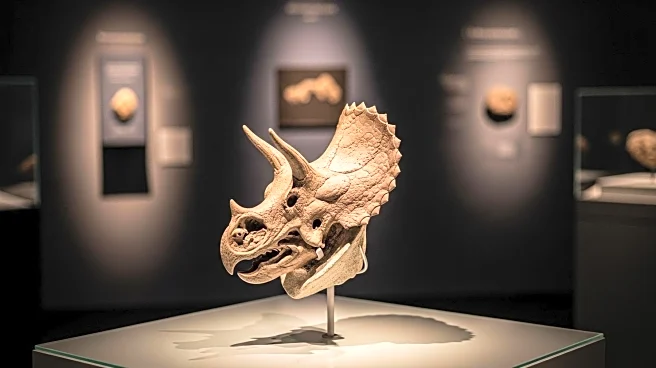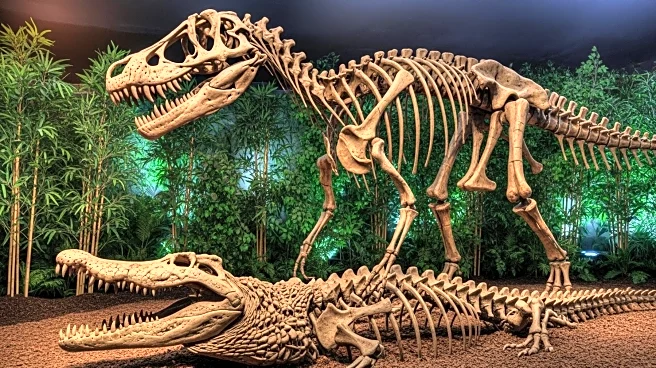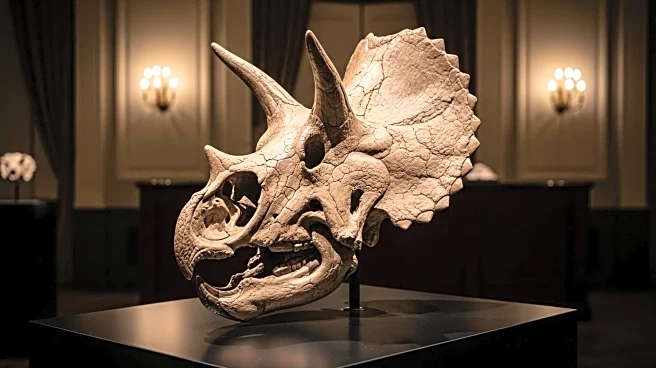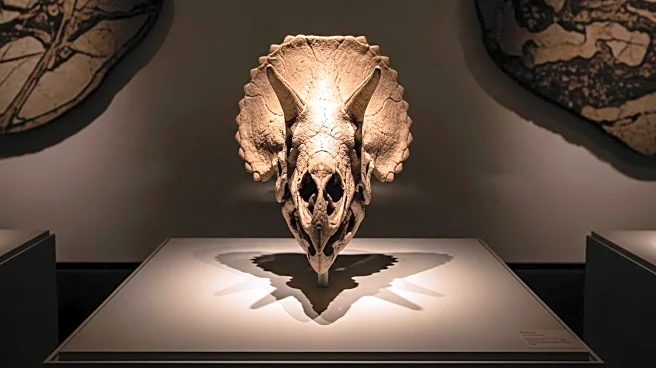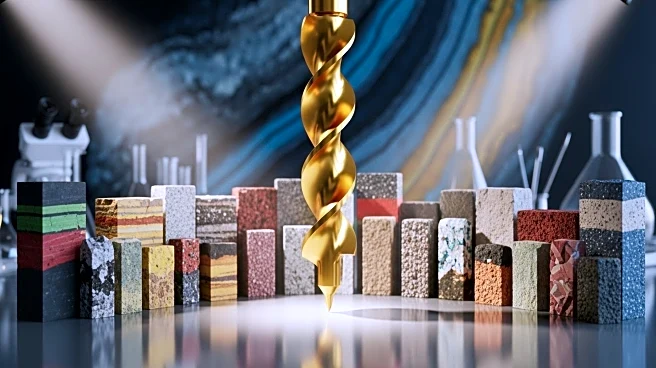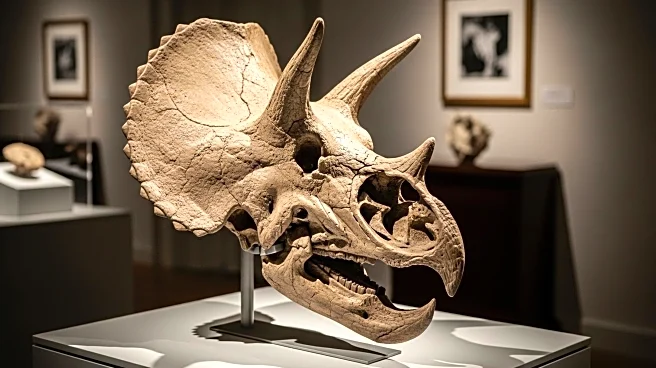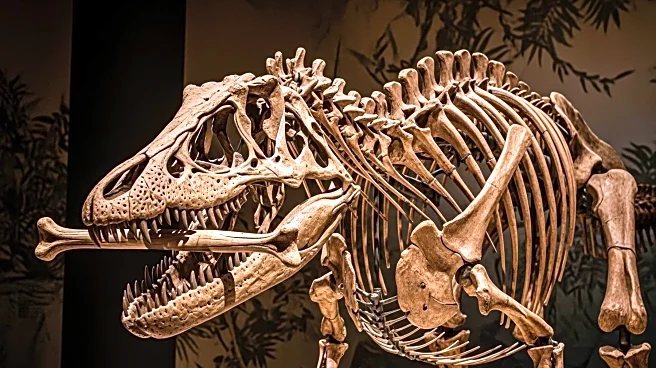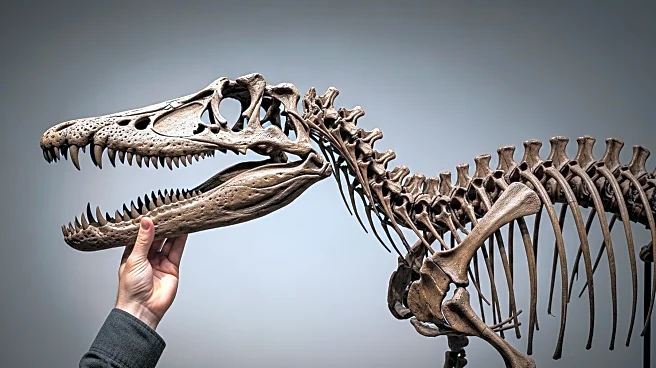What is the story about?
What's Happening?
Phillips, a renowned auction house, is set to auction a juvenile Triceratops skeleton named Cera, estimated to fetch between $2.5 million and $3.5 million. This marks Phillips' first foray into the sale of dinosaur fossils, a move driven by client demand for rare and extraordinary objects. Cera, discovered in South Dakota's Hell Creek Formation, is a well-preserved specimen with two-thirds of its original skeleton intact. The auction is scheduled for November 18, alongside other natural world specimens.
Why It's Important?
The auction of Cera represents a strategic expansion for Phillips into a niche market that has shown resilience despite a shrinking art market. Dinosaur fossils have garnered significant interest, as evidenced by recent high-value sales at other auction houses. This move could attract new collectors and diversify Phillips' offerings, potentially stabilizing its revenue streams amid declining sales. The sale also highlights the growing trend of integrating natural history artifacts into contemporary art auctions, appealing to collectors seeking unique and historical items.
What's Next?
Phillips' entry into the dinosaur fossil market may prompt other auction houses to explore similar opportunities, potentially increasing competition in this niche. The outcome of Cera's auction could influence future sales strategies and the valuation of similar artifacts. Additionally, the success of this auction could lead to more frequent inclusion of natural history items in contemporary art sales, further blurring the lines between different collecting categories.
AI Generated Content
Do you find this article useful?
